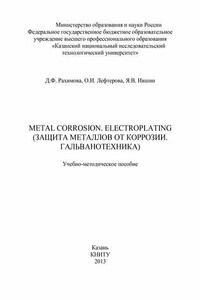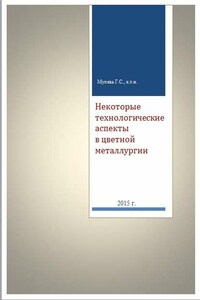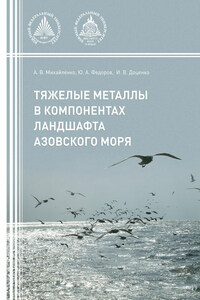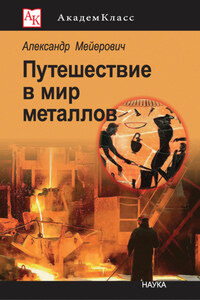Corrosion, phenomenon, electrode, electrolyte, filtrate, laboratory, result, structure, radiator, acid, contribution, molecule, element, degradation, component.
To contribute, to corrode, to protect, to destroy, to apply, to use, to affect, to observe, to establish, to make, to generate, to concentrate, to develop, to refer to, to replace, to perforate.
4. Read and translate the text. Summarize it in Russian.
Corrosion is the deterioration of materials by chemical interaction with their environment. The term corrosion is sometimes also applied to the degradation of plastics, concrete and wood, but generally refers to metals. The most widely used metal is iron (usually as steel) which usually corrodes.
The word corrosion is as old as the earth but it has been known by different names. Corrosion is known commonly as rust, an undesirable phenomena which destroys the luster and beauty of objects and shortens their life. A Roman philosopher, Pliny (AD 23-79) wrote about the destruction of iron in his essay “Ferrum Corrumpitar”. Corrosion since ancient times has affected not only the quality of daily lives of people, but also their technical progress.
Philosophers, writers and scientists observed corrosion and mentioned it in their writings: Pliny the elder, Herodotus, Lomonosov, Austin, Thenard, Hall, Davy and De la Rive.
The most important contributions were later made by Faraday who established a quantitative relationship between chemical action and electric current. Ideas on corrosion control started to be generated at the beginning of nineteenth century. Whitney provided a scientific basis for corrosion control based on electrochemical observation. As early as in eighteenth century it was observed that iron corrodes rapidly in dilute nitric acid but remains unattacked in concentrated nitric acid. Considerable progress towards the modern understanding of corrosion was made by the contributions of Evans, Uhlig and Fontana. Corrosion laboratories established in M.I.T., USA and University of Cambridge, UK, contributed significantly to the growth and development of corrosion science and technology as a multi disciplinary subject. In recent years, corrosion science and engineering has become an integral part of engineering education globally. (From Trakia Journal of Sciences, vol.3, № 7, 2005).
5. Read the text again. Decide whether the following statements are true or false.
1. Corrosion is the degradation of materials due to interactions with their environments.
2. A French philosopher, Pliny (AD 23-79) wrote about the iron compounds in his essay “Ferrum Corrumpitar”.
3. Faraday established a qualitative relationship between oxidising action and electric current.
4. Whitney provided a scientific basis for corrosion control based on the cathodic protection.
5. In recent years, corrosion science and engineering has disappeared in engineering education.
6. Read the text. What is its main idea?
Корро́зия (от лат. corrosio – разъедание) – это самопроизвольное разрушение металлов в результате химического или физико-химического взаимодействия с окружающей средой. В общем случае это разрушение любого материала, будь то металл или керамика, дерево или полимер. Причиной коррозии служит термодинамическая неустойчивость конструкционных материалов к воздействию веществ, находящихся в контактирующей с ними среде.
Коррозия металлов – разрушение металлов вследствие химического или электрохимического взаимодействия их с коррозионной средой. Наиболее часто при коррозии металл окисляется с образованием ионов металла, которые при дальнейших превращениях дают различные продукты коррозии. Коррозия может быть вызвана как химическим, так и электрохимическим процессом. Соответственно различают химическую и электрохимическую коррозию металлов. (From forexaw.com).
7. Work in pairs. Translate the following text from English into Russian.
The major harmful effects of corrosion can be summarized as follows:
1. Reduction of metal thickness leading to loss of mechanical strength and structural failure or breakdown.
2. Hazards or injuries to people arising from structural failure or breakdown (e.g. bridges, cars, aircraft).
3. Loss of time in availability of profile-making industrial equipment.
4. Reduced value of goods due to deterioration of appearance.
5. Contamination of fluids in vessels and pipes.
6. Perforation of vessels and pipes allowing escape of their contents and possible harm to the surroundings. For example a leaky domestic radiator can cause expensive damage to carpets and decorations, while corrosive sea water may enter the boilers of a power station if the condenser tubes perforate.
7. Loss of technically important surface properties of a metallic component. These could include frictional and bearing properties, ease of fluid flow over a pipe surface, electrical conductivity of contacts, surface reflectivity or heat transfer across a surface.
8. Mechanical damage to valves, pumps, etc, or blockage of pipes by solid corrosion products.
8. Work in pairs. Interpret the following passage sentence by sentence.








